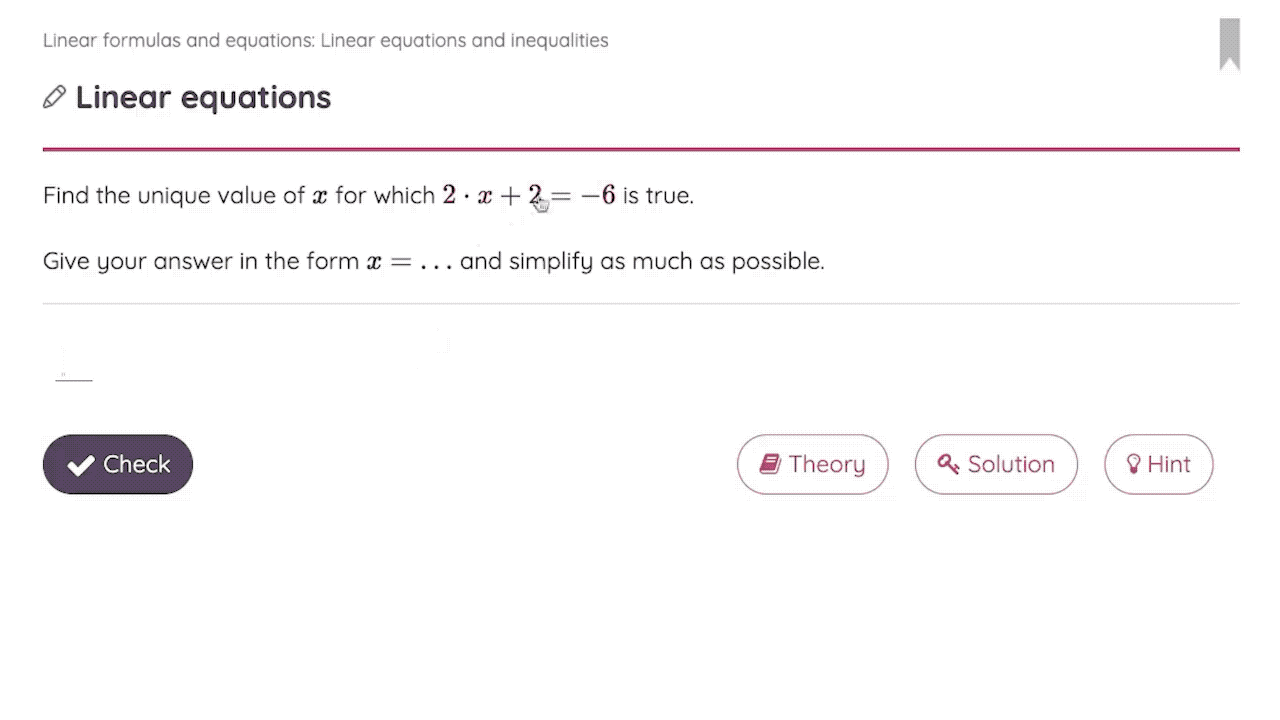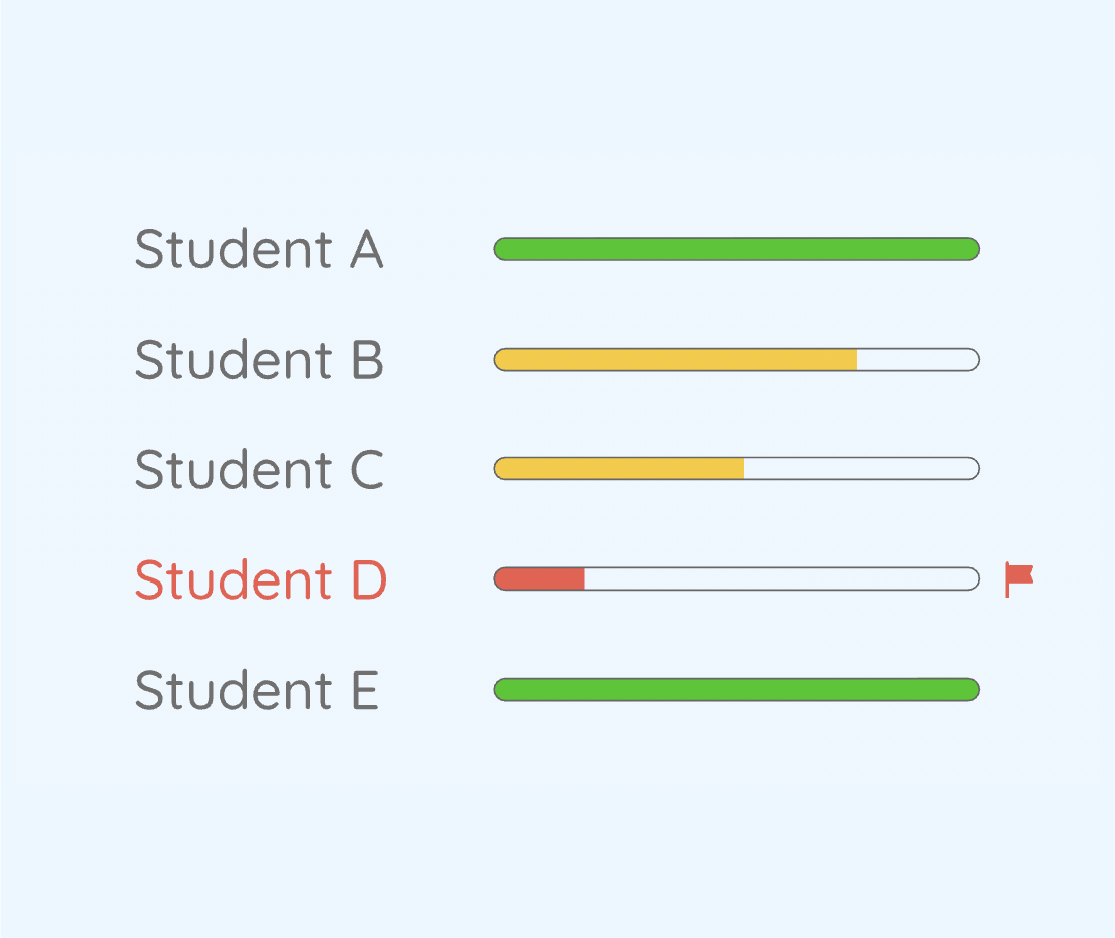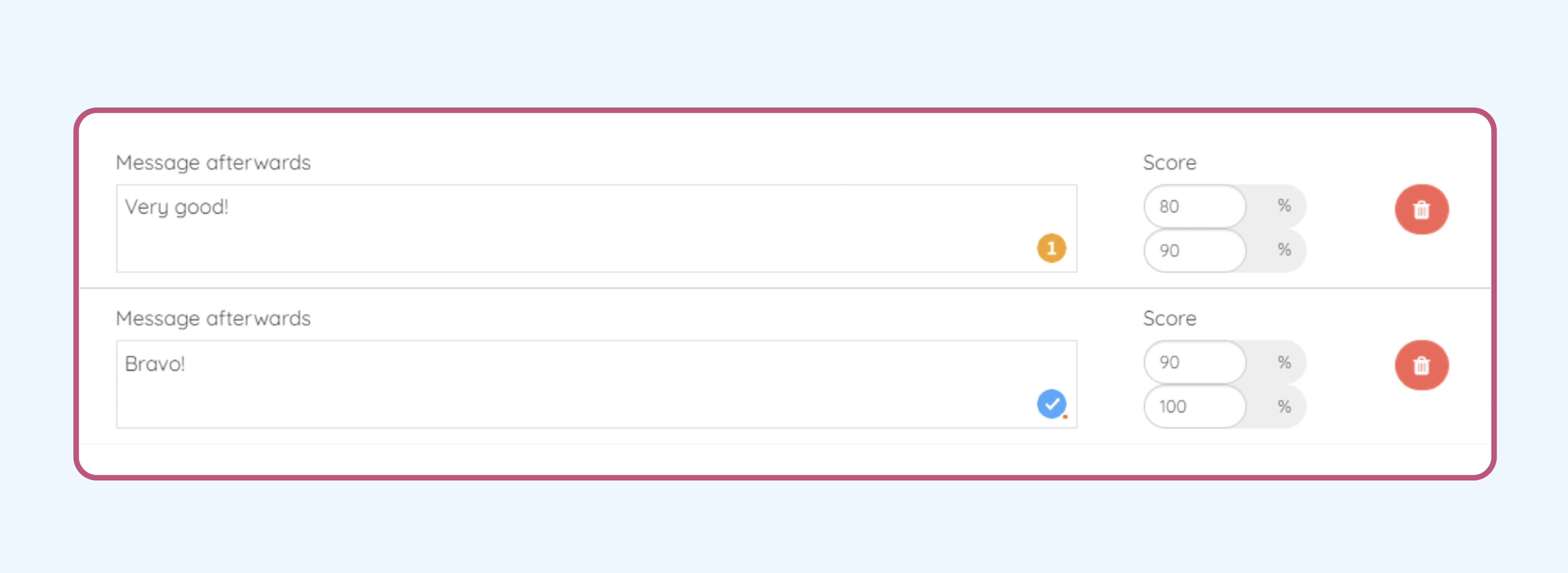Video content is increasingly common for information, entertainment, and learning purposes. Watching video tutorials on platforms like YouTube is becoming an essential part of students’ study routines.
This blog post will discuss the advantages of integrating math video tutorials into your courses and how to use them. We will also introduce our new interactive video explanations.
Math can be an intimidating subject. To help students overcome their negative emotions and lack of motivation, audiovisual materials can be a high-quality and accessible educational tool.
Video tutorials can be a valuable complementary resource for your class and be an ally in your teaching strategies. Carefully selected videos created by experts are an effective way to engage students, motivate them to master the content, and even help them to develop a more positive attitude toward math.
This flexible format is more aligned with how students learn nowadays than others that can be perceived as too rigid and static, like conventional paper textbooks. Incorporating elements like attractive visuals and dynamic voiceovers can increase students’ attention, retention, and understanding.

Tutorials can support students learn or brush up on the content. Learners can watch them whenever and as much as they want, being able to pause them or skip the parts they already know. Since your students might have different math proficiency and motivation levels, this resource can offer extra help to those needing it.
Math tutorials can also facilitate amplifying your course. For example, you can add real-life math examples or videos with worked-out solutions.
Of course, these tutorials can’t substitute teachers. Instead, educators can use them to boost their lessons, improving students’ knowledge while assisting them to feel comfortable and ready to practice.
We are excited to announce that we have created Sowiso Explains, our new YouTube channel.
Sowiso Explains provides students with straightforward and visual mathematics tutorials. We have started following the curriculum of our most used course, Basic Math. We address topics like derivatives, integration, algebra, and functions.
In our first videos, our in-house mathematicians explain how to solve common problems like how to use the chain rule or how to draw the graph of a formula using a table.
Additionally, we offer an interactive and pedagogical experience. We aim to encourage our viewers to adopt a hands-on approach. After solving an exercise, we ask a question so students can keep practicing the content they learned in the tutorial.
Students can test their knowledge via a link that leads to our platform. Our randomization feature allows students to practice as much as they want and to improve their skills at their own pace. Likewise, our automated personalized feedback will guide them toward the right solution and reward their progress, empowering them to develop a growth mindset.
These resources can benefit people needing additional support, like students with math anxiety and dyscalculia or who missed a lesson.
We keep enhancing our platform to maximize students’ learning and user experience. That’s why we also have integrated these tutorials into our platform.
Now, students can find these math tutorials, among other features like interactive theory, hints, and automated personalized feedback.

Screenshot of a math tutorial on our platform
Do you have any questions or suggestions? We are open to feedback and appreciate your requests for our next videos.
Would you like to take a tour of our learning platform and explore its possibilities for your students and you?
You can find different kinds of students in a math classroom: students who need more complex exercises, those who miss classes due to personal circumstances, others who suffer from math anxiety or dyscalculia, etc. A one-size-fits-all approach is not enough to fulfill everyone’s potential.

Personalized learning is one of the most popular and promising current trends in the education and edtech sector. Although this idea is not new, technology enhances our possibilities to provide students with tailored journeys.
Despite the broad efforts institutions make to implement personalized learning in their classrooms, there is still no consensus about what personalized learning is (Walkington & Bernacki, 2020). This situation poses an obstacle to thinking clearly and researching this subject.
In this blog post, we will clarify this concept, explore its potentialities, and give practical examples of how Sowiso empowers teachers to implement personalized learning in their math lessons.
Let’s start with the working definition we have chosen. According to Patrick et al. (2013: 4):
“Personalized learning is tailoring learning for each student’s strengths, needs and interests — including enabling student voice and choice in what, how, when and where they learn — to provide flexibility and supports to ensure mastery of the highest standards possible.”
In a blog post from the National Council of Teachers of Mathematics, Berry (2018) also emphasizes the importance of the humanizing aspects of personalized learning that allow educators to help students to understand mathematics, engage with this subject, and build a positive relationship with it.
Before we discuss the benefits of this approach, there is a prevalent myth of personalized learning we want to dismantle:
Personalized learning offers all learners a custom-made path and the ability to practice at their own pace, but this doesn’t mean that this journey should be lonely.
This is a common misconception about mathematics learning too. Far from being a solo adventure, group work in math presents multiple benefits over individual work (Sofroniou & Poutos, 2016). Encouraging collaboration and active involvement in the class is essential for a successful learning experience and the development of mathematical and socio-emotional skills. It also fosters an inclusive culture.

Among the multiple personalized learning benefits in math, we can find:
Tailored learning paths boost students’ strengths while decreasing their weaknesses. This educational approach can improve students’ performance and consolidate what students learn in the long run.
Relevant and personalized content inspires students and facilitates connecting with them. Besides, personalized learning is based on giving learners agency and creating a safe environment where they can learn from their mistakes. This creates the necessary conditions that students need to cultivate a growth mindset.

We can find multiple profiles in our math courses. For example, in every math classroom, there are students seeking instant gratification, while others are oriented towards delayed gratification. Or some of them need to skip one chapter because they have mastered it, while others got stuck in the first unit. Personalization enables educators to meet everybody’s requirements and help everyone succeed.
Moreover, learners with disabilities can thrive and grow incredibly in personalized learning environments, as research by Basham et al. (2016) shows. If you need more resources to know how to personalize and accommodate your classroom for students with special needs, we recommend this website.

Personalized learning is a tool to make education more accessible and fair. This approach aids in closing the gap by providing underprivileged students with quality content adapted to their level and needs.
Growing evidence shows that technology-supported personalized learning permits close educational gaps for marginalized students (Major & Francis, 2020). Additionally, it can contribute to bringing high-quality education to impoverished areas of the world.
Mathematics is frequently one of the hardest subjects for students. Personalized learning, regular formative assessments, and mastery-based learning are proven ways that improve mathematical learning, and this also applies to other STEM subjects.
However, teachers often don’t have resources like time to provide their students with this method, and personalized learning is often seen as a utopia. Fortunately, technology can expand teachers’ possibilities.
Some people are skeptical of technology-enhanced personalized learning because they think it means replacing teachers and pushing students to solve exercises without processing them deeply. Despite this belief, these technological resources can be designed to promote active learning while empowering teachers to elevate their lessons.
By automating the most repetitive parts of educators’ work, teachers can use the time they save to focus on their job’s most creative and interpersonal dimensions. This extra time can be dedicated to promoting mathematical and critical thinking skills. This time can also be used to make mathematics more relevant for students by finding ways to incorporate their interests into the lessons and increase their interest through real-life problems.
Now, we will present some of Sowiso’s features that personalize math learning while simplifying educators’ lives and engaging students.
Our adaptive systems work by analyzing the students’ performance and, subsequently, choosing to make the material harder or easier. It adapts the path the students take through the content so that it fits their levels. Students first have a diagnostic test that determines their level in the given section. Then, exercises are adjusted to them.
Adaptivity helps students get realistic insights about their performance and progress, increases students’ agency, and encourages them to practice until they master the course content.
In practice mode, our learning environment automatically analyses students’ answer attempts and identifies where and what the mistakes are, giving specific hints to their learning path.
Students get this feedback regardless of their input, whether it’s a wrong answer or a correct step towards the solution, simulating private tutoring.


Our digital tool allows teachers to get integral reporting over all facets of their course, with in-depth analyses per subsection. Our learning analytics enable educators proactively identify red flags and improve their teaching or curriculum design by adding more focus on a specific topic or redesigning a component of the course. Moreover, this feature assists teachers in detecting which students need additional assistance on time.
In our digital platform, you can adjust test settings for individual students and make exceptions for students who need them. For example, dyslexic students can have extra attempts and time to complete the test.
We have also developed features like text-to-speech for all our content to make our platform more inclusive for our users.
If you want to give a personal touch to your course, you can personalize the messages students receive on our platform depending on their results. Previous teachers have incorporated texts like “Bravo!”.
This is a simple yet inspiring strategy to humanize technology, engage your students and motivate them to keep doing their best.

Do you have any doubts about personalized learning in math or other STEM subjects? Feel free to contact us, and our educational experts will get back to you.